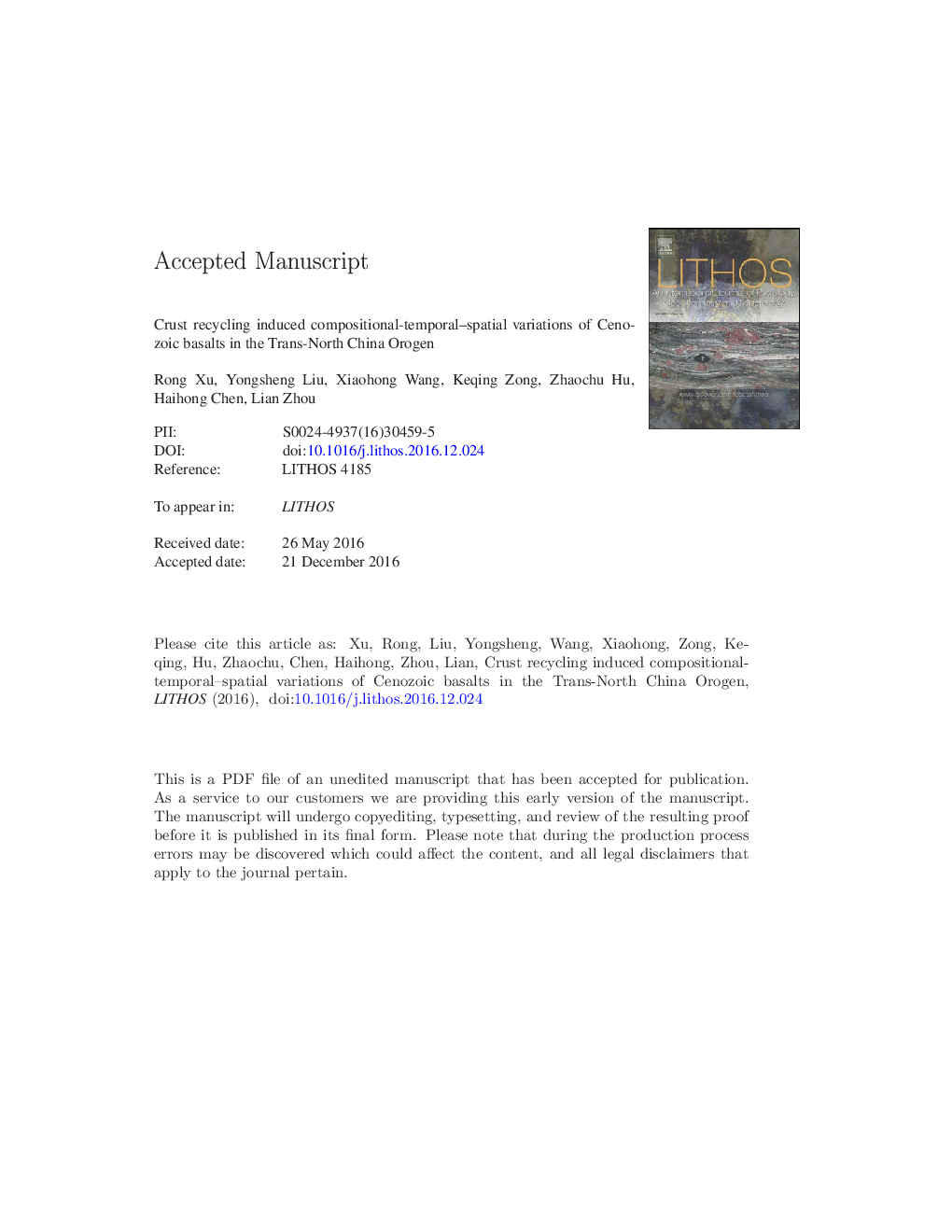| Article ID | Journal | Published Year | Pages | File Type |
|---|---|---|---|---|
| 5784288 | Lithos | 2017 | 44 Pages |
Abstract
It has been advocated that the stagnant Pacific slab within the mantle transition zone played a critical role in the genesis of the Cenozoic basalts in the eastern part of the North China Craton (NCC); however, it is not clear whether this recycled oceanic crust contributed to the chemical makeup of the Cenozoic basalts in the Trans-North China Orogen (TNCO, the central zone of the NCC). Here, we show that Cenozoic basalts from the TNCO are featured by low CaO contents, high TiO2 and FeOT contents and high Fe/Mn and Zn/Fe ratios, indicating a mantle source of pyroxenite. Temporally, these basalts evolved from alkali basalts of Late Eocene-Oligocene age to coexisting alkali and tholeiitic basalts of Late Miocene-Quaternary age. Spatially, their isotopic and chemical compositions vary symmetrically from the center to both the north and the south sides along the TNCO, i.e., SiO2 contents and 87Sr/86Sr ratios increase, FeOT contents and 143Nd/144Nd, Sm/Yb and Ce/Pb ratios decrease. The estimated average melting pressure of the TNCO tholeiitic basalts (~Â 3Â GPa) agrees well with the present lithosphere thickness beneath the north region of the TNCO (~Â 90-120Â km). The temporal and spatial chemical variations of Cenozoic basalts in the TNCO suggest that the recycled oceanic crust in the mantle of the TNCO is mainly related to the southward subduction of the Paleo-Asian oceanic plate and the northward subduction of the Tethyan ocean plate. The westward subduction of Pacific slab may not have contributed much than previously thought.
Related Topics
Physical Sciences and Engineering
Earth and Planetary Sciences
Geochemistry and Petrology
Authors
Rong Xu, Yongsheng Liu, Xiaohong Wang, Keqing Zong, Zhaochu Hu, Haihong Chen, Lian Zhou,
